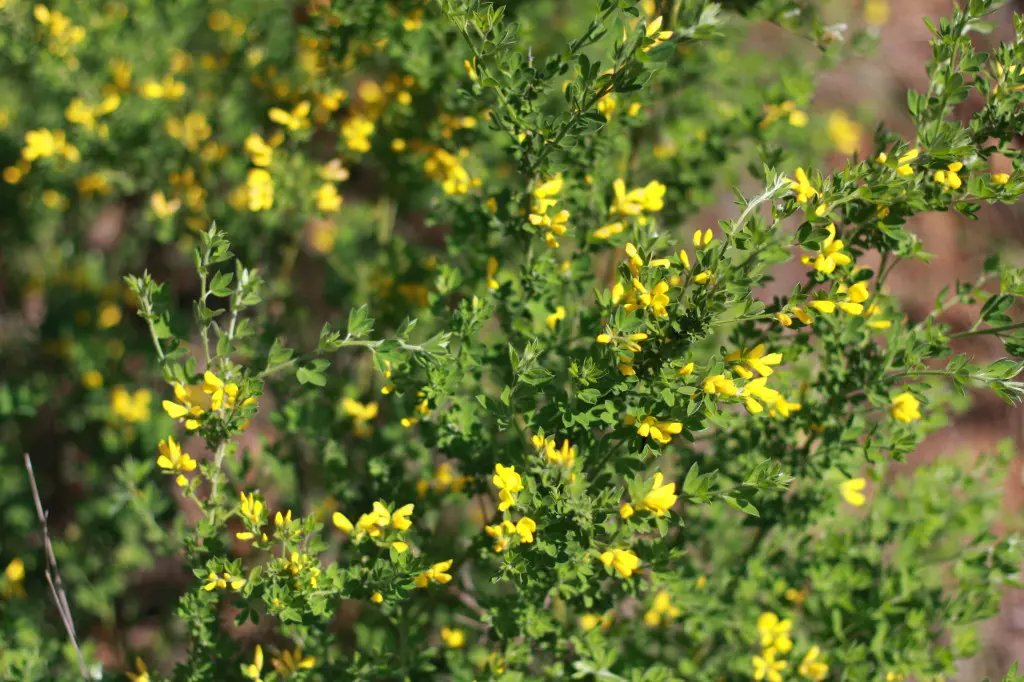
French broom (Genista monspessulana) is a fire prone, upright, evergreen shrub, commonly to ten feet tall. The round stems are covered with silvery, silky hair, and the small leaves are ususally arranged in groups of three. About eighty-five percent of the photosynthetic tissue of French broom is in leaf tissue. The small (less than half-inch) yellow flowers are pea-like and clustered in groups of four to ten. The mostly inch-long pods are covered with hairs.
This species sometimes is confused with Scotch broom (Cytisus scoparius), which has pods with hairs only at the seam, green stems that are five-angled and ridged, flowers that are golden yellow and larger than half an inch, and only about fifty-five percent of total green tissue as leaves.
French broom is found primarily in central coastal counties from Monterey County north to Mendocino County and inland in Lake, Solano, and Contra Costa counties. It is also known from Del Norte County, northern Sierra Nevada foothill counties to 800 meters, and in Kern, San Bernardino, and San Diego counties.
This broom is common on coastal plains, mountain slopes, and in disturbed places such as river banks, road cuts, and forest clearcuts, but it can colonize grassland and open canopy forest. It is found growing in varied soil moisture conditions, but prefers siliceous soils. Unlike other broom species in California, it grows reasonably well on alkaline soils with pH 8. It is competitive in low-fertility soils because of mutualistic relationships with nitrogen-fixing bacteria found in small nodules on roots.
French broom currently occupies approximately 100,000 acres in California. It displaces native plant and forage species, and makes reforestation difficult. It is a strong competitor and can dominate a plant community, forming dense monospecific stands.
As with other broom species, the best method for removal of a French broom infestation depends on climate and topography, age and size of the infestation, importance of impact to non-target species, and type, quantity, and duration of resources available to remove and control broom at the site. All methods require appropriate timing and follow-up monitoring. Because of the seedbank, monitoring removal sites to locate and kill new seedlings is essential. Location and retreatment of resprouts is also necessary. Sites should be examined once a year, when the seed germination period ends in late spring, for five to ten years and every two years thereafter.







